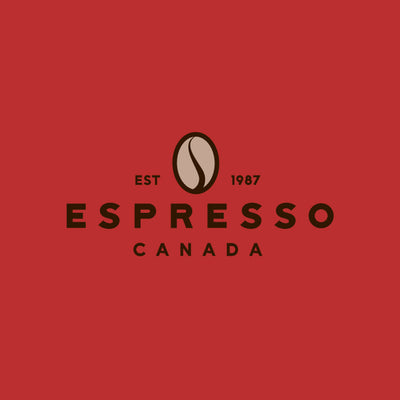Which Coffee Beans Are Better for Espresso: Arabica or Robusta?
Oct 23, 2021
Caffea Arabica and Coffea Conephora (better known as Robusta) are the two main species of coffee beans used in the commercial production of coffee throughout the world and the two main varieties used for espresso. Is one better than the other? Learn about the differences of each species and understand what each has to offer your cup of espresso.
Arabica and Robusta Coffee- An Overview
Arabica
Arabica was the first species of coffee beans to be cultivated and the most grown throughout the world. It represents around 60% of world production and has a complex, balanced aroma.
“100% Arabica” is a common billing adorning coffee packaging everywhere, intended as a sign of quality. This s why you will see it noted on a package as a major selling feature. However, the species itself does not guarantee quality and there is far more commercial-grade Arabica than there is speciality.
It is the high-grade specialty Arabica that produces the best espresso. The best high grade Arabica beans for espresso come from Colombia. There are two types of beans that come from this area: Colombia Supremo and Excelsio. Both are sourced from a single region but what distinguishes the two are the bean size. Colombia Supremo refers to the largest size while Excelsio beans are smaller.
You will more likely see the specific variety of Arabica noted on the packaging when a roaster wants you to know the quality of Arabica you are getting. What you can expect from an espresso brewed with high quality Arabica is a lighter coffee that is balanced and smooth with notes of fruit, chocolate and caramel, a medium body, a bright acidity and a pleasant, clean aftertaste.
Robusta
Robusta coffea Conephora is often given a bad rap and identified as the inferior of the two coffee bean varieties. It grows at low altitudes and is highly resistant to disease. Typically this plant produces twice the yield per tree than Arabica. It is estimated that Robusta accounts for approximately 30% of the coffee grown in the world
The liquor is full bodied and slightly tart compared to Arabica and contains a higher proportion of caffeine. Robusta will produce a coffee that is more bitter or sometimes described as “heavier” and will often showcase chocolate and hazelnut notes. It is the Robusta beans that produce the crema we enjoy on top of an espresso. This is why you will not see Robusta beans on their own for espresso brewing. Robusta shines when it is blended with Arabica.
Caffeine
Caffeine is present in both bean varieties. Caffeine is an alkaloid (i.e an organic substance) found in the leaves, seeds or fruit of over 50 species of plants including, tea, coffee and cocoa.
The invigorating potential of caffeine was already well known in the 6th century B.C. Caffeine is comprised of four of the most elements on earth: carbon, hydrogen, nitrogen, and oxygen.
How much caffeine can we drink in a day? The consensus amongst scientists is that 300 to 400 mg is considered a moderate amount to consume in a day. It is crucial to keep in mind that caffeine is not only found in coffee but is also present in other food sources.

Amounts of caffeine in an espresso made from 100% Arabica is 52mg. An espresso made from beans blended with Robusta has 90 mg of caffeine. In comparison 100mg of dark chocolate has 80mg of caffeine.
Cost of Coffee
The cost of coffee beans can be significantly affected by political, economic, and climatic events in the country where they come from. If you rely on beans exclusively from one area or rely on one variety, you could potentially see a huge spike in cost.
Arabica is often the more expensive of the two varieties. This is based on demand. However, the cost of both Arabica and Robusta can fluctuate significantly. Depending exclusively on one country or depending exclusively on one bean variety can impact cost. That is why you will more often see coffee blends.
Coffee Blends
Often you will see coffee that is comprised of not only different types of coffee beans (arabica + robusta) but beans from different countries. These are often known as blends. Coffee blends are crafted for two reasons: 1) cost and 2) to produce a better tasting coffee.
While cost is always a consideration, the primary goal of most specialty roasters is to produce a blend that creates a superior tasting coffee. The fact is that a more balanced and richer espresso is achieved when blending bean varieties.
The crops of a single origin bean can be affected by many variables including weather, soil composition, growing conditions etc. Therefore, there may be variations from year to year. Blending allows for a more consistency. A coffee roaster will be able round out taste by using bean varieties.
A Blend of Arabica and Robusta Make the Best Espresso
While single origin coffees are the big rage in North America, Italians maintain the best coffee can only be achieved by blending coffee beans. They not only blend beans from various countries, because each has its own characteristic and profile, but they also blend bean varieties.
They do so because each variety, the Arabica and the Robusta, brings characteristics to the espresso that creates complexity which cannot be achieved with a single variety.
A roaster’s goal may be to produce a coffee appropriate to certain culturally defined tastes.
Click here to see what an Italian barista says about coffee blends. In Italy, often seen as the birthplace of espresso, cafés will only make espresso using coffee blends.
For example, Italians in Milan like a subtle, sweet yet lively espresso. Blends in this area will incorporate more Arabica beans. Italians in Naples, on the other hand, enjoy a more bitter and intense style and their blends will incorporate more Robusta beans. In both cases, the roaster will develop a “miscela” blend that is suited to the tastes and preferences of the people of the region.
Which Blend is Best
This is an impossible question to answer. When you consider that there that coffee bean varieties are grown all over the world and then factor how each variety is processed and finally roasted the combination of blends a roaster can achieve are endless.
If you are just starting to enjoy espresso, you may want to begin with an exclusive 100% Arabica roasted to the medium / dark range for espresso brewing. This is the most mild and smooth espresso.
From there you can venture out and begin to taste various blends. At Espresso Canada we have three blends (in Italian miscela means blend) which make excellent espresso. The range for our blends from mildest to strongest is Miscela Oro, Miscela Bar and Miscela Extra Bar. You can see on each coffee label the bean varieties that are included as well as the country or origin.
Three Things to Consider When Buying Beans
- Freshness (be sure to know when the coffee was roasted)
- Buy what you need so you don't have store excess beans.
- Roast level. Choose the roast for your preferred brewing method.
At the end of the day, your palette will tell you what you like best. There is no right or wrong when it comes to choosing a blend. Whether you choose a 100% Arabica or a blend of Arabica and Robusta be sure to keep on eye on the roast you are choosing – make sure it is suitable for brewing an espresso- and secondly make sure the coffee you choose won’t harm your coffee machine.
If we can be of assistance in choosing the right coffee beans for an espresso or choosing the appropriate machine, please contact us.








2 comments
You hit the nail on the head. I’ve lived in Milan and have traveled throughout the north to mid regions of Italy, and agree with the overview you’ve made: nice job.
I was only checking to find out where Arabica espresso beans were from. Thank you for your wonderful, informative explanation about espresso and blends and the whole story. I wonder if New Yorkers like it blended since there are a lot of italians there.